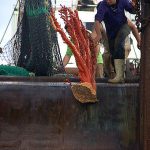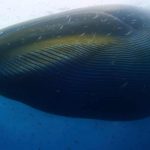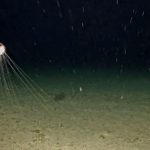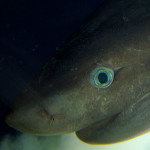Source: Greenpeace NZ
Author: Jessica Desmond
As a result of the New Zealand government’s lobbying efforts on behalf of the fishing industry, a regional fisheries meeting this week has only made small steps toward increasing protection of the ocean from bottom trawling, and a Talley’s vessel has been taken off an international blacklist.
The South Pacific Regional Fisheries Management Organisation (SPRFMO) concluded its meeting in Vanuatu last night with disappointing results for deep sea life, largely as a result of New Zealand’s efforts to protect its destructive bottom trawling industry.
One of the ways SPRFMO protects deep sea corals is with the so-called “move on rule” where fishing vessels must move to a new fishing area if they exceed the amount of destruction allowed to a particular species. The weight limit was previously set at 250kg for stony corals, but recent research showed that 250kg in the trawl net meant up to 85 tonnes of coral destroyed on the seabed.
In response to the science, the EU proposed reducing the limit to 25kg in the net, which would have significantly reduced the damage to deep sea corals. The proposal was supported by the US and Australia, but was vehemently opposed by New Zealand fishing industry lobbyists the High Seas Fishery Group, led by Talley’s, and the New Zealand government. The resulting weak compromise sets a new 80kg limit, allowing as much 33 tonnes to be destroyed on the seabed in a single trawl.
“The New Zealand bottom trawling industry is stuck in a mindset of dragging up as much profit from the deep sea as it can get, no matter what the cost to our ocean. Other countries are trying to move on from this scorched-earth approach to fishing, but the New Zealand government seems determined to let our industrial fleets continue their rampage,” said Jessica Desmond of Greenpeace New Zealand, at the meeting as part of the Deep Sea Conservation Coalition delegation.
Talley’s ship taken off blacklist
The New Zealand government also insisted that a Talley’s fishing vessel, the Amaltal Apollo, be taken off the SPRFMO draft IUU (Illegal, unregulated, unreported) blacklist, despite trawling 14 times in an area closed to fishing in May 2018. The vessel was allowed to continue fishing in international waters for the rest of the 2018 fishing season. While the government is prosecuting the company and the skipper, the case still hasn’t been through the courts and MPI is still letting the vessel fish in New Zealand’s seas in the meantime.
“As a Kiwi I’m appalled. The New Zealand government has basically just gone to bat for Talley’s, despite its pending prosecution, and managed to get the Amaltal Apollo removed from the draft blacklist, even though nothing has changed since last year when it was blacklisted. The ship is still fishing – just not on the high seas – and we call on the government to refuse it a high seas permit in this year’s fishing season,” said Jessica Desmond.
“It’s sad to say, but the New Zealand government has been captured by the deep-water fishing industry. It is acting as their advocate rather than as a government.”









